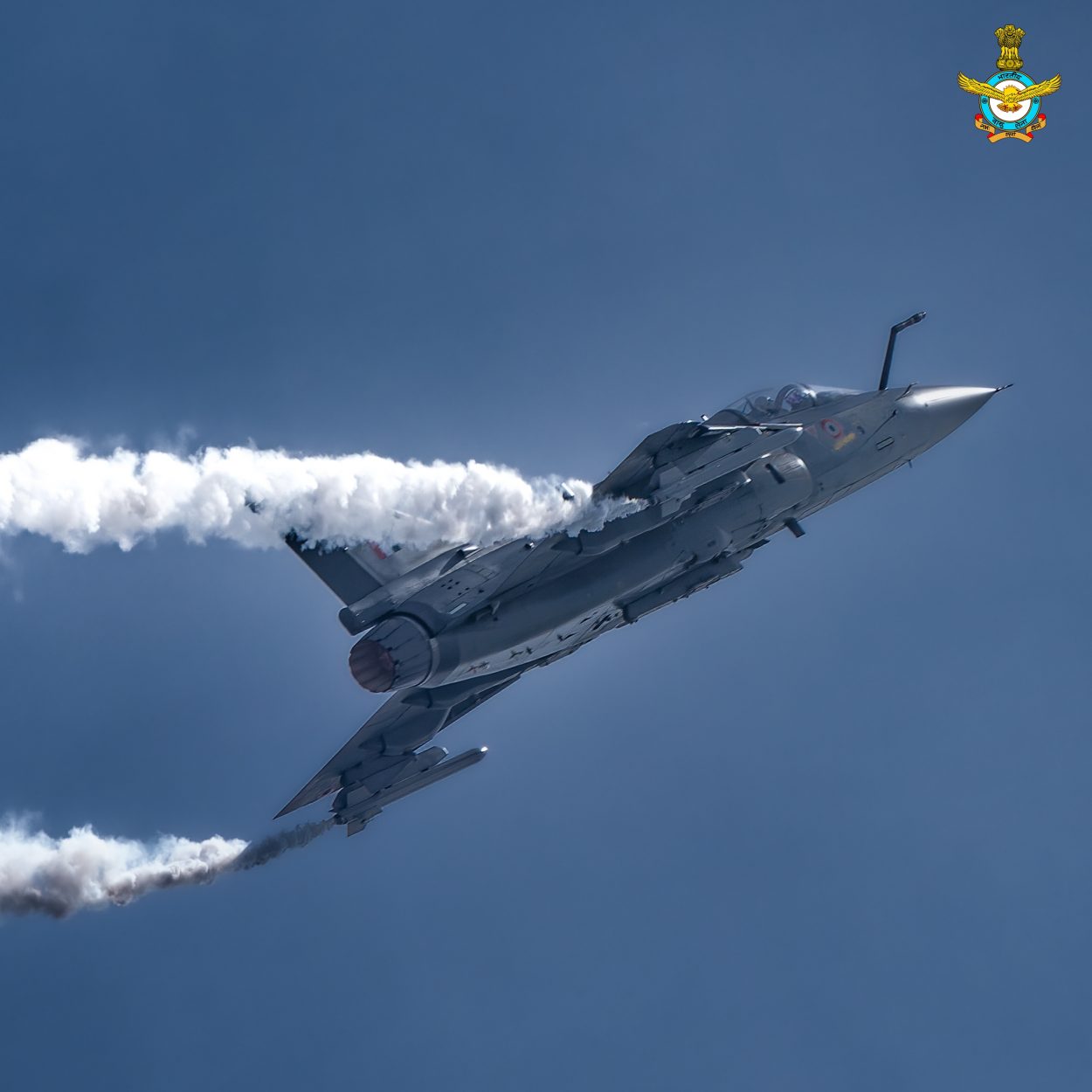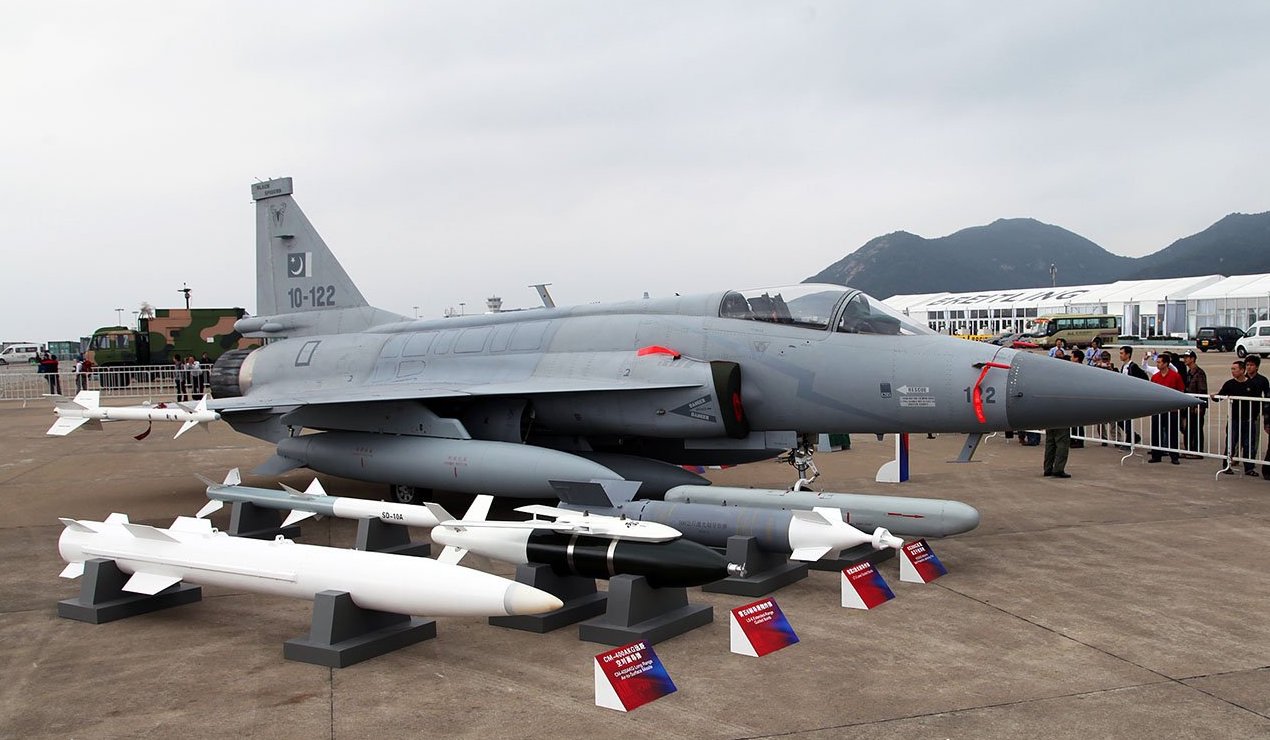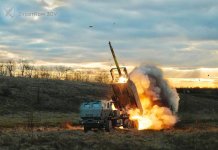A top delegation of the Argentine Air Force is reportedly in Denmark to evaluate second-hand F-16 fighter jets. The South American nation appears to have postponed the technical evaluation of India’s Tejas Light combat aircraft (LCA).
Powered By Su-35 Fighters, Russia Is ‘Winning In Air,’ But Ukrainians Are Leading On Ground – US Navy Admiral
Along with the Danish alternative, Argentina is also considering the Chinese-built JF-17 Thunder and India’s Hindustan Aeronautic Limited (HAL) Tejas aircraft. The service has been attempting to examine the different aspects of fighter jets before making the final decision.
The delegation is conducting technical assessments of the Danish F-16 A/B MLU fighter bomber jets for the procurement process. Director of Plans, Programs, and Budget for the Argentine Air Force, Brigadier Diego Garcia, stated that the delegation consisted of experts and technicians that went to the European nation to assess the offered aircraft.
Losing The ‘Thunder’: Myanmar Grounds Its Pak-China Developed JF-17 Fighter Fleet Due To Technical Snags
He also stated that technical teams and experts are currently researching and reviewing bids from China, India, and Denmark. The F-16 A/B MLU aircraft is proposed to Argentina under the joint efforts of Copenhagen and Washington.

Previously, there were speculations that Argentina had finalized the Chinese JF-17 for its Air Force during the pandemic. Argentina’s ambassador to China met the officials of the China National Aero-Technology Import & Export Corporation (CATIC) for the procurement of Chinese fighter jets.
Some reports claimed that China had sent a few JF-17 jets to Argentina for evaluation by their air force. The assessments of the Chinese aircraft lasted for around a month. In response to this preemptive news, the United States reportedly pressured Argentina to abandon the deal.
China would have gained a foothold in America’s backyard had the deal been approved. Since then, it appears Washington has been attempting to sell the Argentine Air Force used Danish fighter jets.
Meanwhile, India has also aggressively promoted its Tejas light combat aircraft to the South American nation. According to sources familiar with the subject, the top defense authorities from Argentina frequently brought their best pilots along when they visited HAL facilities in India to inspect the LCA Tejas.

Buenos Aires purportedly asked for another round to test the homegrown fighter plane, but HAL postponed it until sometime in 2023 for unknown reasons. An Argentine mission led by the Joint Chiefs of Staff Chief of Argentina, General Juan Paleo, visited India’s DefExpo 2022.
Previously, a high-level delegation from HAL also visited Argentina, demonstrating India’s effort and Argentina’s interest. In August, Dr. S Jaishankar, the external affairs minister, visited the South American country.
Argentina’s Internal Challenges
Buenos Aires has been struggling to modernize its air force. Following the Falklands War, the United Kingdom put a complete embargo on exports of defense hardware to Argentina.
The embargo had little to no impact on the Argentine Armed Forces during the 20th century, but in the 21st century, Argentina faced challenges to modernize its air force. Argentina could not acquire many aircraft due to their British-built Martin-Baker Ejection seats, leaving the country with only a few options.
India’s Tejas and the Chinese-made JF-17 have been deemed the finest options for the South American country despite both these jets using Martin-Baker seats.
However, experts pointed out that domestic circumstances may soon prevent Argentina from selecting a fighter.
Given the current global recessionary trend, the situation appears abnormally bleak for the South American country. Inflation is putting a lot of strain on the Argentine economy. As a result of the peso’s volatility and interest rates as high as 52%, investors are selling off peso assets.
In 2020, the country reorganized its sovereign bonds in a large US$ 110 billion deal. Due to the bonds’ distressed status and their value being just 20–30 cents on the dollar, this strategy has proven fruitless.
Although Argentina strictly maintains the official exchange rate to the US dollar, the unofficial rate is substantially higher, and the difference between the two values is rapidly growing, suggesting the economy is becoming more erratic.

The EurAsian Times had earlier reported that the Argentinean government set aside about US$ 700 million in September to purchase fighter jets. The current economic climate may point to better progress in the deal, but it is insufficient to allay default fears.
Furthermore, Argentina’s national general elections are slated to occur in 2023. It is said that the country’s politics are still affected by the unrest and democratic backsliding of the 20th century.
The country’s military forces had absolute power and muzzled the populace’s voice. The Falklands War took place during the brutal dictatorship of Jorge Rafael Videla, and the nation lacked modern defense technology due to the highly disputed battle with the UK.
The nation’s reluctance to spend on defense has been caused by its complicated military past and international pressure from the UK. It is conceivable that the agreement for the fighter jets would become mired in political controversy in light of the forthcoming elections, further endangering it.
F-16 Fighting Falcon Vs. Tejas Fighter Jet
The US-built F-16 A/B Fighting Falcon and the Indian-built Tejas Light combat aircraft are categorized as fourth-generation fighter aircraft. The development of the F-16 fighter jet began in the 1960s, and the plane entered service in the late 1970s.
Contrarily, the LCA program dates back to the early 1980s, but it took more than two decades for the aircraft to become operational with the Indian Air Force. The first squadron of Tejas in IOC-II configuration was declared operational in 2016.
Compared to the US-made F-16, the Tejas fighter jet is thus a relatively new aircraft. It is a well-known fact that the Falcon is one of the world’s most prominent and extensively deployed multirole fighter aircraft, with more than 4,000 active combat aircraft in service in more than 25 nations.
On the other hand, Tejas is a single-engine, delta wing, light multirole fighter jet with just 40 units currently in service in the Indian Air Force. However, a $6.07 billion contract for 73 Tejas Mk1A fighter aircraft and 10 LCA Tejas Mk1 trainer aircraft was given to HAL by the IAF in January 2021.
As opposed to Tejas, which has a length of 13.2 meters, a wingspan of 8.2 meters, and a height of 4.4 meters, the F-16 fighter is 14.52 meters long, 5.01 meters in height, and 9.45 meters wide.
The Fighting Falcon can fly at a peak speed of 2123 km/h and has a ceiling height of 50,000 feet. In contrast, Tejas can reach a top speed of 2,385 km/h and has a ceiling height of over 52,000 feet.
General Electric engines power the Tejas and the F-16 fighter aircraft. The Tejas is equipped with a single 85kN F404-GE-IN20 turbofan engine, while the F-16 is equipped with an F110-GE-100 turbofan engine.
The F-16 is outfitted with a standard 1x20mm M61A1 Gatling-style internal automatic cannon. The aircraft possesses nine hardpoints for weapons payloads: one at each wingtip, three under each wing, and one centerline under the fuselage.
The US-made fighter can also be equipped with a range of munitions, including AIM-9 Sidewinder short-range air-to-air missiles, Penguin anti-ship missiles, conventional drop bombs, Runway Denial bombs, laser-guided bombs, GPS-Guided bombs, AIM-120 AMRAAM medium-range air-to-air missiles, cluster bombs, and AGM-65 Maverick air-to-ground missiles.
The Tejas fighter jet has eight external hardpoints for carrying weapons, three under each wing, one in the middle, and one beneath the port side air intake. Under the starboard air inlet, there is a 23mm twin-barreled GSh-23 cannon mounted in a blister fairing with a burst firing rate of 50 rounds per second and a muzzle velocity of 715 meters per second.
The aircraft can be loaded with air-to-air, air-to-ground, and anti-ship missiles, as well as precision-guided munitions, rockets, and bombs. Electronic warfare, targeting, surveillance, reconnaissance, or training pods can be carried on hard points.
Compared to the F-16, a well-established platform that has grown to fulfill the needs of its customers, Tejas is a relatively new aircraft that has not yet conducted any combat missions.
Additionally, the Falcon has demonstrated excellent effectiveness in air-to-air combat and ground attack during the 1982 Israeli-Syrian conflict and the 1990–1991 Persian Gulf War.
- Contact the author at ashishmichel(at)gmail.com
- Follow EurAsian Times on Google News




